Lu/Yang of Chinese Taipei brought the thrills in the men’s doubles second round at the Australian Badminton Open, beating the world #1s and last week’s winners Li/Liu.
By Aaron Wong, Badzine Correspondent live in Sydney. Photos: Badmintonphoto (live)
Such is the state of men’s doubles that the oldest pair – with a combined age of 69 – reascended to world #1 and then relinquished the status this week to one of the two young pairs who are making two trips to the summit so far this year. The preview bemoaned monotony rearing its ugly head but – hooray! There’s been a breakthrough at the Australian!
The camaraderie dimension
Finishing a tad before 10pm, Taiwan’s third men’s doubles pair caused the upset of the day and added the freshly reascended to world #1 Li Junhui / Liu Yuchen (as of Thursday afternoon’s BWF lists) to their small but growing list of eminent casualties this year which include one half of the Rio gold medallists as well as the British bronze medallists.
Lu Ching Yao / Yang Po Han are distinctive from their higher ranked countrymen Chen Hung Ling / Wang Chi-Lin (pictured) – who also went through to the quarter-finals – and Lee Jhe-Huei / Lee Yang, but share some traits in varying degrees. Their camaraderie is the warmest, ever present, mutual and definitely not perfunctory. In addition to the usual high fives are half hugs between points, airing of ideas rather than demands, and turning to look behind before serving to genuinely check on the partner’s welfare. These are doubles soft skills – intrinsically human social skills rather – that we haven’t seen explored to this degree and is a dimension that’s perhaps lost in the current KPI (key performance indicators) era that values results, scientifically precise athletic improvements, and tactics as the only major aspects of development.
What it boils down to is their camaraderie helped their concentration and sustained a positive spirit especially during the dwindling of their eight-point lead down to one in the culminating staccato moments of the rubber game. Yesterday, Hong Kong’s Or/Tang couldn’t convert against Chinese opponents but this evening Lu/Yang did, winning 21-15, 15-21, 21-17.
Different from tennis, the umpire isn’t in command of crowd behaviour in badminton and when the crowd likes or loathes you regardless they will mimic your war cries. And the majority took Yang Po Han (pictured), with his ponytail above the undercut, to their hearts because he was the warmer and more animated between points. This, as well as his 110 percent commitment to points, roused his quieter partner to join in the mad scramble.
The top Chinese Li/Liu reeled in the rubber game deficit by regrouping their courage to once again assert their superior quality drives. The more it worked, the shorter the rallies became.
Bits from the teammates above them
What’s interesting is that the strokes of Lu/Yang are not quite as mechanical as Taiwan’s first pair Lee/Lee (or Li/Liu for that matter) and their style wasn’t idiosyncratic in the pressure moments as, say, the Japanese or Korean pairs are, or as thoughtful as Taiwan’s second pair Chen/Wang, or as playful as Indonesia’s easy to imagine Gideon/Sukamuljo.
Facing the resurgent superior shots, they threw everything they could at it from sitting on the floor getting it back, to bent over double, to pirouette. It wasn’t deliberate showmanship, deception, or unreachable flukes, either, but the effect was thoroughly unpredictable. It was simply what was coming off their racquets.
Yang Po Han, who is lightly reminiscent of Lee Jhe-Huei at his histrionic best, did most of the desperate saving and the bigger, quieter Lu Ching Yao (similar of height and disposition to Wang Chi-Lin) had clarity of purpose to leave the rear court big smasher role and play the kind of varied strength deep push or choose an interesting net shot (recalling Chen Hung Ling minus his premeditation) that’s neither tight nor cross-court but into around the service line, which confused his opponents.
The Chinese were composed and tactically and stroke-wise sound but at sea in only the final shot of the few and fantastic rallies of the finale. Their coaches in the same shoes wouldn’t have known what more to do either. Every rally saved by the Taiwan pair was an original as were the exchanges of camaraderie between them.
Such an even contest all fell over
Speaking of highly idiosyncratic and highly mechanical men’s doubles, Choi Sol Gyu / Kim Duk Young (pictured) were locked in stubborn yet amazing angle-less flat drive exchanges of the extreme, so much so it routinely left the men and on both sides toppled backwards onto their posterior. To gain a sense of it, Yuta Watanabe, who is 1.65m and you would think be comfortable enough adjusting lower and lower to disallow the other side to gain even an inch of advantage, was in the end no exception to losing his balance.
In claiming his elder statesmen-hood, former world #2 Hiroyuki Endo has never seemed more formidable and has helped 19-year-old Watanabe reach a men’s career high of world #26 and the way they are playing the pair’s ranking should continue climbing. Unfortunately for them today, the Koreans won 21-15, 11-21, 22-20.
Click here for all Thursday results
![AUSTRALIAN OPEN 2017 R16 – Take note of Taiwan’s third Lu/Yang of Chinese Taipei brought the thrills in the men’s doubles second round at the Australian Badminton Open, beating the world #1s and last week’s winners Li/Liu. By Aaron Wong, […]](https://www.badzine.net/wp-content/uploads/ngg_featured/20170622_2151_AustraliaOpen2017__ABO7150_rotator.jpg)
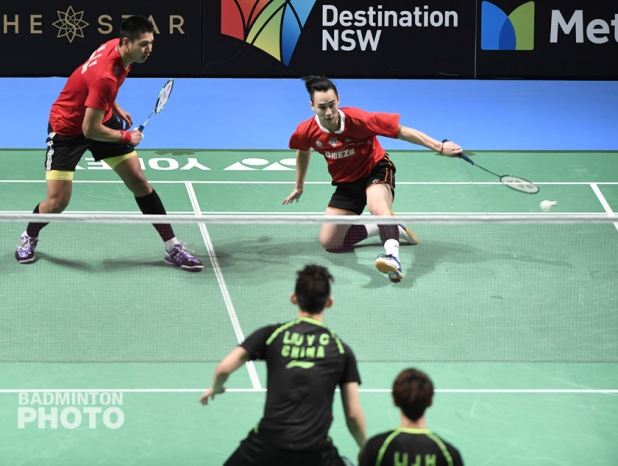
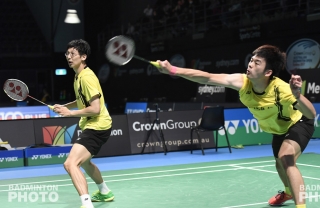
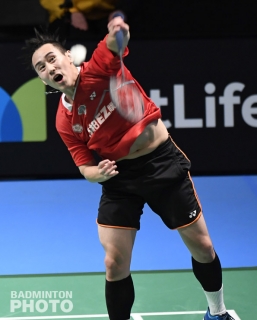
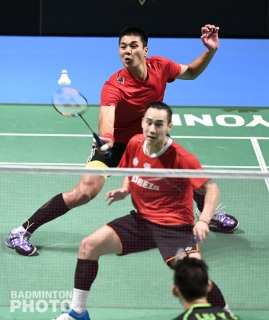
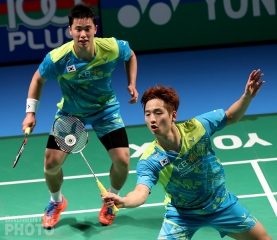

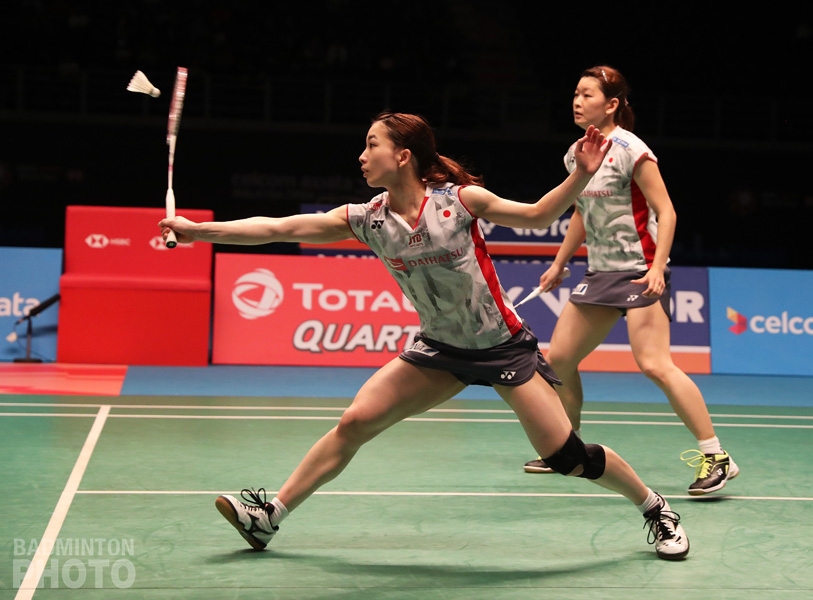
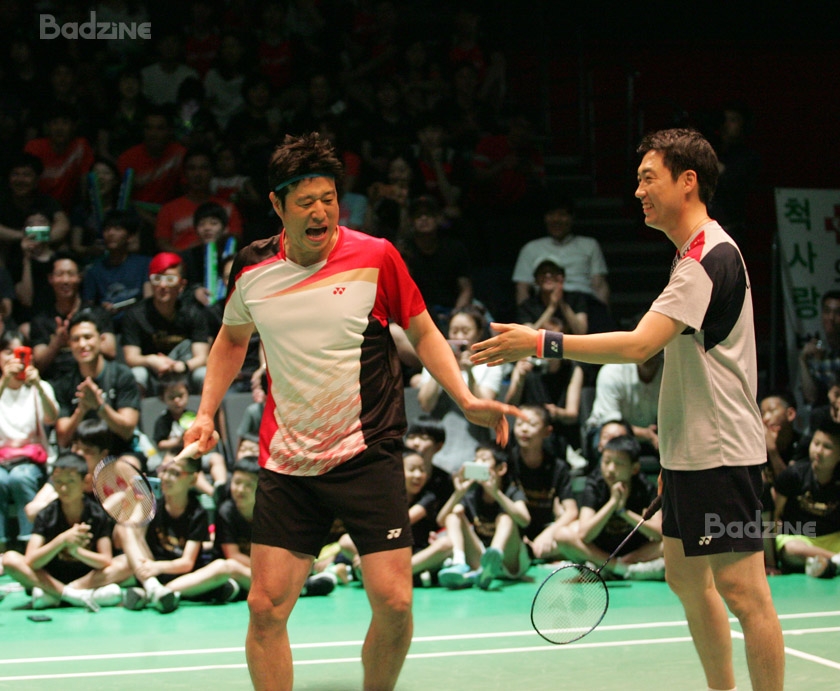
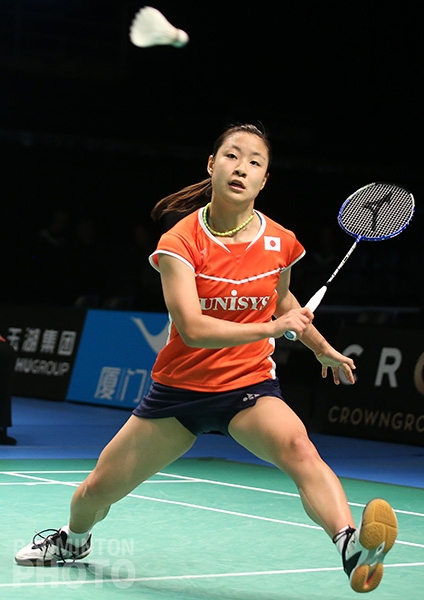
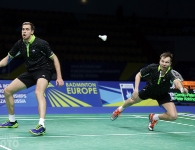
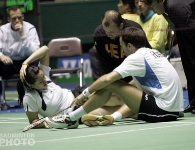
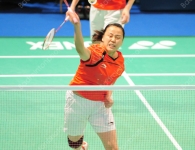
Leave a Reply